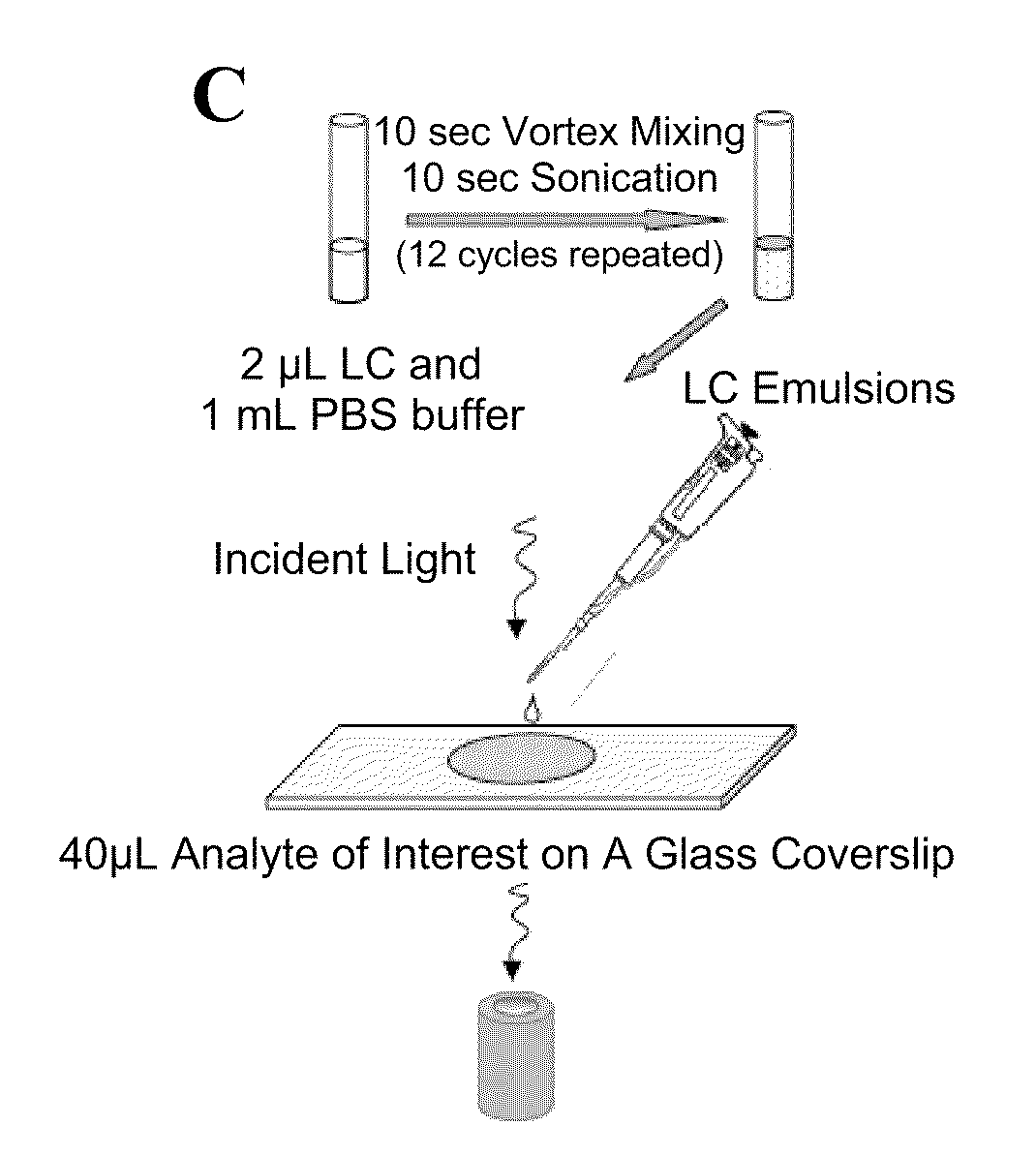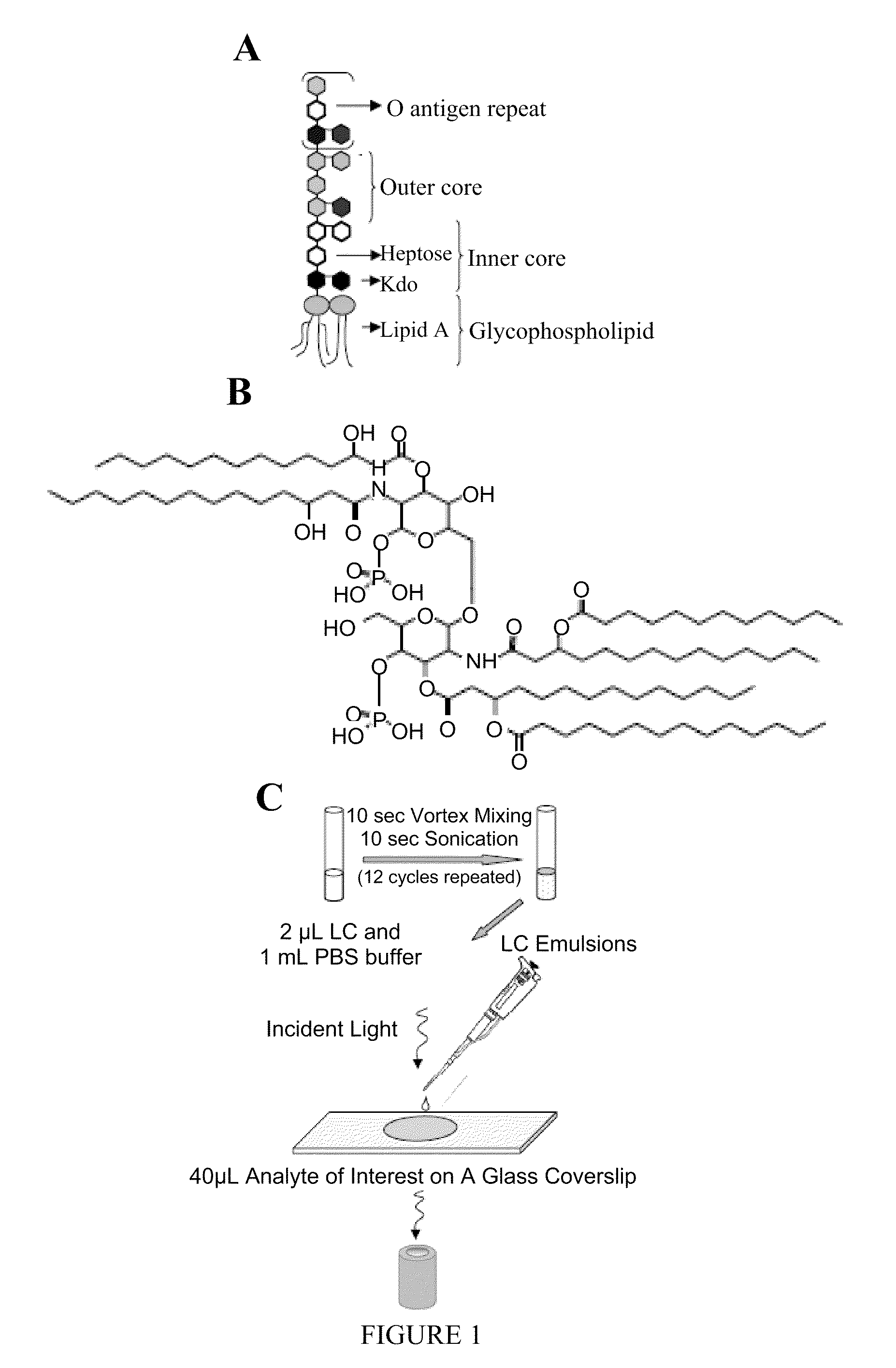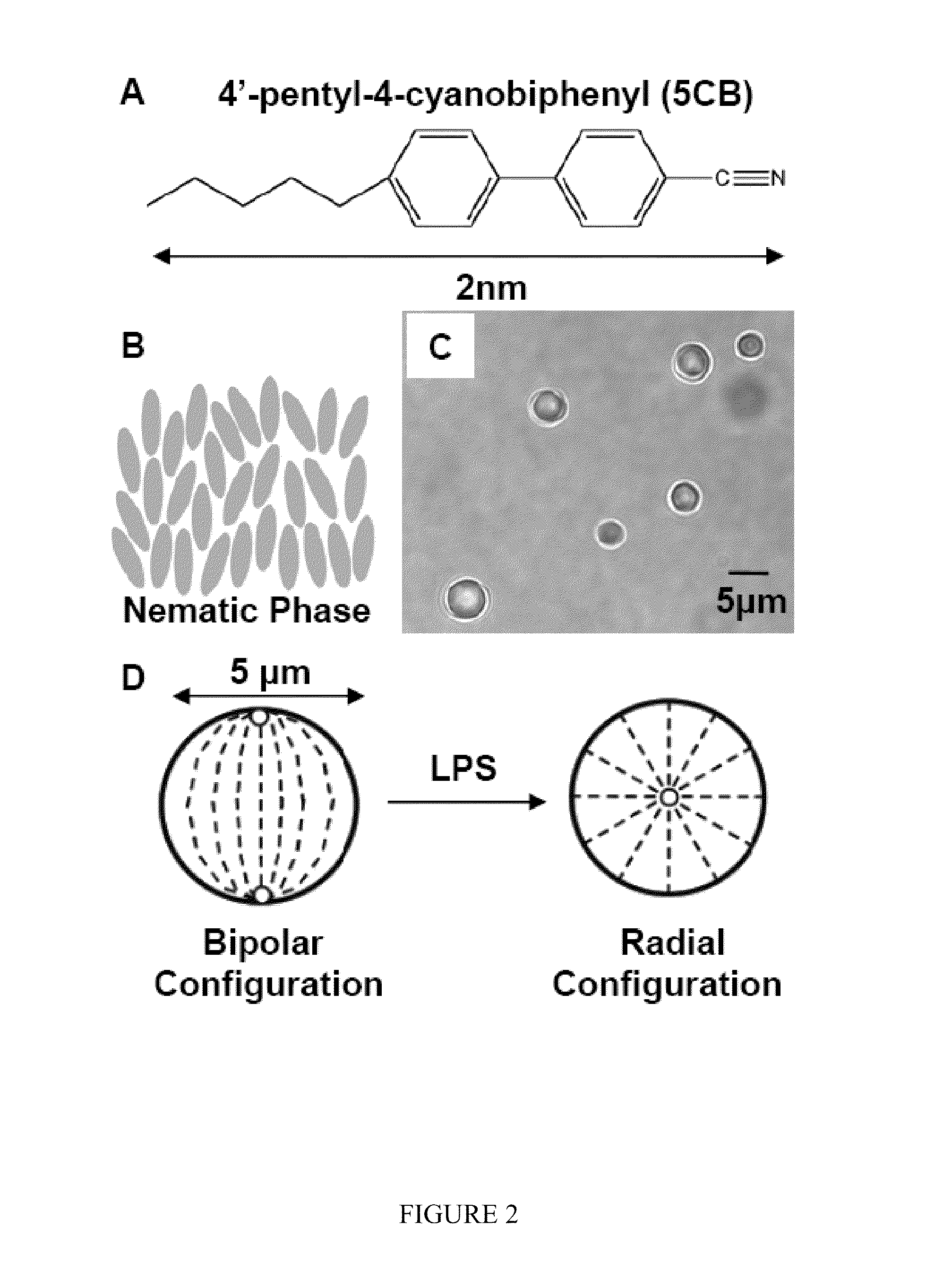Analyte detection using liquid crystals
analyte detection and liquid crystal technology, applied in the field of liquid crystal analyte detection methods, can solve the problems of complex and expensive assays, interfering with lal's ability to react, and requiring the use of skilled technicians, so as to facilitate the immobilization of microdomains
- Summary
- Abstract
- Description
- Claims
- Application Information
AI Technical Summary
Benefits of technology
Problems solved by technology
Method used
Image
Examples
example 1
Materials and Methods
[0115]As applicable and unless otherwise noted, the following materials and methods were used throughout the following examples.
[0116]Materials. Endotoxin (lipopolysaccharide (LPS) from E. Coli O127:B8 and E. Coli O111:B4), lipid A (diphosphoryl from E. Coli F583), and sodium dodecylsulfate (SDS) were purchased from Sigma-Aldrich (St. Louis, Mo.). DLPC and DOPC were purchased from Avanti Polar Lipids, Inc. (Alabaster, Ala.). Octadecyltrichlorosilane (OTS), methanol, methylene chloride, sulfuric acid, hydrogen peroxide (30% w / v), and heptane were obtained from Fisher Scientific (Pittsburgh, Pa.). Ethanol was obtained from Pharmco-Aaper (Brookfield, Conn.). The LC, 4′-pentyl-4-cyanobiphenyl (5CB) was obtained from EM Sciences (New York, N.Y.). LAL reagent water was purchased from Associates of Cape Cod, Inc. (E Falmouth, Mass.). Endo Trap red Equilibration Buffer (PBS buffer) was purchased from Profos AG (Regensburg, Germany). Neptune pipette tips (no detectable e...
example 2
Spontaneous LPS Adsorption onto Aqueous-LC Interfaces in Grid-Based LC Device
[0123]In this example, the inventors used a grid-based (non droplet-based) LC device to demonstrate that spontaneous adsorption of LPS at the aqueous-LC interface can trigger an ordering transition in the LC from a parallel orientation (planar anchoring) to a homeotropic (perpendicular) anchoring. These experiments were performed by hosting the LC within metallic grids placed on an OTS-treated glass microscope slide. The result of these experiments are shown in FIG. 4.
[0124]Upon contact with PBS buffer, the LC at the interface with the buffer maintained a planar anchoring with parallel orientation (FIG. 4D). This is confirmed by the optical micrograph (FIG. 4A). Upon contact with 2 mL 1 milligram / mL LPS in PBS buffer for less than two minutes, the LC at the interface with the buffer switched to homeotropic anchoring with perpendicular orientation (FIG. 4F). This is confirmed by the optical micrograph (FIG. ...
example 3
Spontaneous LPS Adsorption onto Aqueous-LC Emulsion Interfaces
[0126]In this example, the inventors conducted initial experiments to demonstrate that the LC droplet-based sensors and methods of the present invention could be used to detect LPS in an aqueous sample. 10 μL of LC emulsion were mixed with either 404 μL 1 mg / mL LPS or 40 μL LPS free PBS buffer (control). As expected, in the absence of LPS (control), the LC droplets maintained a bipolar anchoring configuration (FIG. 5C), as evidenced by the two surface defects seen under bright field microscopy (FIG. 5A, 5D) and polarized microscopy (FIG. 5B, 5E). Note also the lack of an isogyre in the polarized images (5B, 5E).
[0127]In contrast, when LC emulsion droplets were contacted with 1 mg / mL LPS in PBS buffer, they rapidly (in less than one minute after contact) converted to the radial anchoring configuration (FIG. 5H), as evidenced in bright field micrographs showing a single point defect (FIG. 5F) in each droplet and characteris...
PUM
| Property | Measurement | Unit |
|---|---|---|
| concentrations | aaaaa | aaaaa |
| volume | aaaaa | aaaaa |
| concentrations | aaaaa | aaaaa |
Abstract
Description
Claims
Application Information
 Login to View More
Login to View More - R&D
- Intellectual Property
- Life Sciences
- Materials
- Tech Scout
- Unparalleled Data Quality
- Higher Quality Content
- 60% Fewer Hallucinations
Browse by: Latest US Patents, China's latest patents, Technical Efficacy Thesaurus, Application Domain, Technology Topic, Popular Technical Reports.
© 2025 PatSnap. All rights reserved.Legal|Privacy policy|Modern Slavery Act Transparency Statement|Sitemap|About US| Contact US: help@patsnap.com



